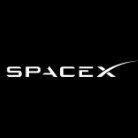Members Can Post Anonymously On This Site
GPS III Space Vehicle 05 Mission
-
Similar Topics
-
By European Space Agency
Image: This very high-resolution image captures the Egyptian city of Giza and its surrounding area, including the world-famous Giza Pyramid Complex. View the full article
-
By NASA
The space shuttle Discovery launches from NASA’s Kennedy Space Center in Florida, heading through Atlantic skies toward its 51-D mission. The seven-member crew lifted off at 8:59 a.m. ET, April 12, 1985.NASA The launch of space shuttle Discovery is captured in this April 12, 1985, photo. This mission, STS-51D, was the 16th flight of NASA’s Space Shuttle program, and Discovery’s fourth flight.
Discovery carried out 39 missions, more than any other space shuttle. Its missions included deploying and repairing the Hubble Space Telescope and 13 flights to the International Space Station – including the very first docking in 1999. The retired shuttle now resides at the National Air and Space Museum’s Steven F. Udvar-Hazy Center in Virginia.
Learn more about NASA’s Space Shuttle Program.
Image credit: NASA
View the full article
-
By Space Force
U.S. Space Force Chief of Space Operations Gen. Chance Saltzman spoke to hundreds of cadets and national leaders during the 2025 National Conclave for Arnold Air Society and Silver Wings, emphasizing the evolving role of the Space Force in the future fight.
View the full article
-
By NASA
4 min read
Preparations for Next Moonwalk Simulations Underway (and Underwater)
As an adventurous individual, Becky Brocato, Ph.D., has a deep curiosity for understanding the conditions of the human body, especially as it pertains to spaceflight. This passion directly translates to her role at NASA, where Brocato serves as the Element Scientist in the Human Health Countermeasures division and oversees research that seeks to reduce medical risks that astronauts face from spaceflight, ensuring the continual health and safety of current and future NASA astronauts.
As part of the Human Research Program, the group strives to understand the physiological effects of spaceflight and develop strategies to mitigate any detrimental effects on human health and performance. For Brocato, her role presents the exciting opportunity to tangibly improve the lives of astronauts and actively contribute to the success of their missions.
Becky Brocato, Human Health Countermeasures Element Scientist for NASA’s Human Research Program “The thrill of my job comes from the sheer audacity of what we are undertaking—enabling humans to conquer the challenges of deep space,” said Brocato. “I’m invested in ensuring our astronauts are not just prepared—but confident—as they tackle immense physical and mental demands.”
Brocato attributes her early interest in flight and space research to her father and grandfather, who built a plane together when Brocato was younger. She recalls sitting in the plane’s fuselage, pretending she was traveling the world.
“My dad was my childhood hero for opening my eyes to the skies,” said Brocato. Fueled by this passion, she began her career as an aerospace engineer at the U.S. Army’s Yuma Proving Ground in Arizona, where she tested parachutes for aerial delivery, including the parachute designed for NASA’s X-38 crew return vehicle.
Now, having worked at NASA for four years, Brocato is excited to pass down her insight to younger generations, teaching them how her work ensures the sustainability of future space missions. Recently, after delivering a seminar on the methods to counter the risks humans face from spaceflight, Brocato spoke with college students eager to learn more about the complexities of the human body.
Becky Brocato gives a presentation on the research strategy for NASA’s Human Research Program to the Food and Nutrition Risk at the International Space Life Sciences Working Group Plant Symposium, held in Liverpool, England in September 2024.Becky Brocato “I felt like I wasn’t just sharing knowledge; I was helping to inspire a new generation of potential researchers to tackle the challenges of space exploration that was a real bright spot,” said Brocato. “Seeing their enthusiasm reaffirmed exactly why I came to NASA.”
This enthusiasm manifests in Brocato’s personal life: as a mother, she loves witnessing her child’s reaction to launches. “It was awesome to see the pure, unadulterated awe in my 7-year-old’s eyes when NASA’s SpaceX Crew-8 lifted off,” said Brocato. “Moments like that are a reminder that spaceflight can touch all generations, which fuels my passion both at work and at home.”
For Brocato, prioritizing her personal time is crucial, and she enjoys spending it pursuing physical activities. She is an avid runner, whether she is jogging to work at NASA’s Johnson Space Center or competing in local adventure races. She has even been skydiving, which is where she met her husband.
Brocato is excited to witness NASA continue to push boundaries in human exploration, returning to the Moon and onto Mars. As a dedicated worker known for her curiosity and enthusiasm, Brocato’s work is crucial to advancing NASA’s mission.
NASA’s Space Operations Mission Directorate maintains a continuous human presence in space for the benefit of people on Earth. The programs within the directorate are the hub of NASA’s space exploration efforts, enabling Artemis, commercial space, science, and other agency missions through communication, launch services, research capabilities, and crew support.
To learn more about NASA’s Space Operation Mission Directorate, visit:
https://www.nasa.gov/directorates/space-operations
Share
Details
Last Updated Apr 17, 2025 EditorHeather Monaghan Related Terms
Space Operations Mission Directorate Explore More
3 min read Meet the Space Ops Team: Anum Ashraf
Article 3 weeks ago 3 min read Meet the Space Ops Team: Diana Oglesby
Article 5 months ago Keep Exploring Discover Related Topics
Humans In Space
International Space Station
Commercial Space
NASA Directorates
View the full article
-
-
Check out these Videos





Recommended Posts
Join the conversation
You can post now and register later. If you have an account, sign in now to post with your account.
Note: Your post will require moderator approval before it will be visible.